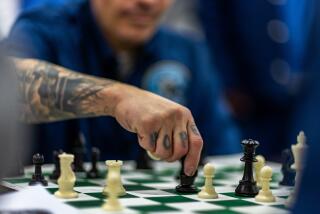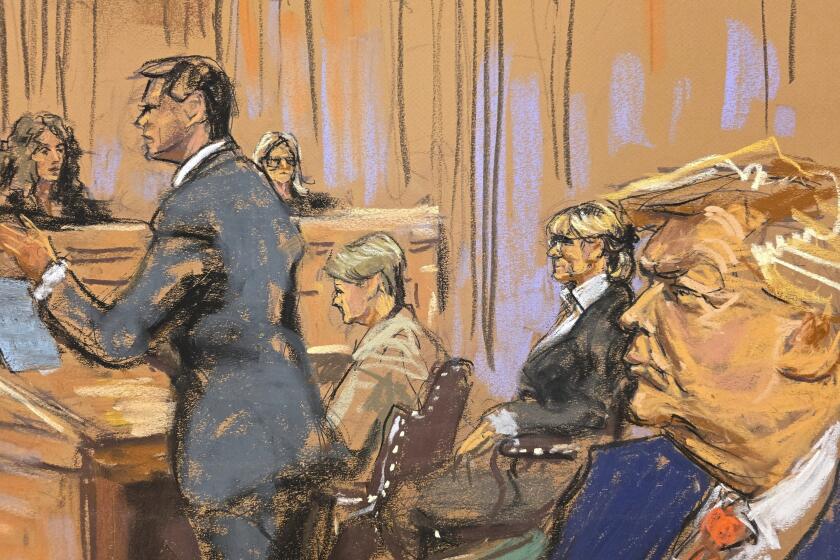Death penalty inherently lets government kill innocent Americans
In my experience, drinking with a nun is not an ordinary occurrence, but, two weeks ago, I had the honor of sharing a bit of whiskey on the rocks with an extraordinary woman of faith, Sister Helen Prejean, as she wound down from another evening of agitating against the death penalty.
Sister Helen is widely known for her book “Dead Man Walking,” an autobiographical account of her emotionally wrenching work as a spiritual advisor to death row inmates — a story that was made into a movie of the same name starring Susan Sarandon as the justice-seeking nun. As a leading advocate for the abolition of capital punishment in the United States, Prejean was in Los Angeles for the opening of “Windows on Death Row: Art from Inside and Outside the Prison Walls” at the University of Southern California’s Annenberg School for Communication and Journalism. The works on display include paintings and drawings by death row inmates, as well as cartoons from top editorial cartoonists (including one I drew for The Times).
In her remarks at the opening of the exhibit on Oct. 22, she gave a boost to a measure that is likely to be on the ballot next year that would ban the death penalty in California. If Californians choose to do away with executions, she said, it will be a big step toward elimination of capital punishment throughout the country, given that the 746 death row inmates held in California prisons comprise a quarter of all the people sentenced to death in the United States.
A key part of Prejean’s message is that, contrary to popular belief, the death penalty in America is not reserved only for “the worst of the worst.” There is a wide disparity in how the ultimate punishment is applied. Rich murderers who can afford good lawyers rarely, if ever, end up on death row. In some jurisdictions, cops who do shoddy investigations, prosecutors interested only in notching up another victory, callous judges and inferior juries play a decisive role in who gets a death sentence. Those who do are generally poor, undereducated and disproportionately non-white. Most disturbing of all, a shocking number of them are wrongly accused, wrongly convicted and, sometimes, wrongly executed by the state.
Joining Prejean onstage was Ndume Olatushani, a soft-spoken, middle-aged man whose lovely painting of African faces is the highlight of the exhibit. Olatushani did not start out as an artist, but he had 28 years to hone his skills with paint and brush — the 28 years he spent on Tennessee’s death row waiting to be killed for a murder he did not commit. Prejean calls herself “the storyteller,” but Olatushani, she said, is the real “witness” to the recklessness of a justice system that claims the right to say who should live and who should die.
Thanks to the advent of DNA testing, the number of exonerations for the wrongly convicted for a variety of crimes, including murder, has skyrocketed. The Innocence Project has freed 325 people who ended up in prison because of eyewitness misidentification, poor forensics, false confessions or false testimony.
That is just the tip of a very big and very cold iceberg, though. Informed estimates indicate many more thousands of innocent men and women languish in prison cells because DNA tests are not applicable in every case or because they lack a champion who will battle for them against indifferent government officials.
Since 1973, 156 Americans who were condemned to die have been exonerated and freed. Since 1976, 1,419 have been executed. There is no reason to think that there were not at least a few, and more likely many, innocent people among those 1,419.
As a Roman Catholic nun, Prejean’s activism is fully in line with the church teaching that all lives are sacred and redeemable and that, therefore, no government has the right to put any person to death, regardless of their crime. Though I did not tell Sister Helen, I must confess I have had a hard time reaching that same belief in unlimited mercy. Some murderers are so monstrous that it is hard to feel their obliteration is not justified. If there truly were a guarantee that only the very worst of the worst would end up on death row, I might not object.
But our justice system is not built that way. It is deeply, humanly flawed and there is no way to make it perfect. As conservative opponents of the death penalty like to say, why would anyone who thinks government screws up most things think it can get capital punishment right?
There are many strong arguments, both liberal and conservative, against executions. The tipping point for me is the fact that innocent people do end up on death row and do end up dead at the hands of the state. Of all the evils in the world, that is among the worst. It should not ever happen in a nation that claims to be the champion of life and liberty.
More to Read
A cure for the common opinion
Get thought-provoking perspectives with our weekly newsletter.
You may occasionally receive promotional content from the Los Angeles Times.











